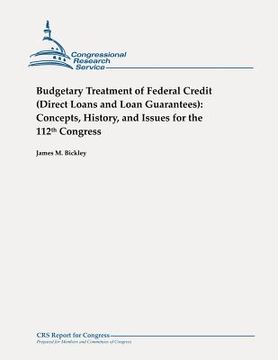Budgetary Treatment of Federal Credit (Direct Loans and Loan Guarantees): Concepts, History, and Issues for the 112th Congress (in English)
Synopsis "Budgetary Treatment of Federal Credit (Direct Loans and Loan Guarantees): Concepts, History, and Issues for the 112th Congress (in English)"
The U.S. government uses federal credit (direct loans and loan guarantees) to allocate financial capital to a range of areas, including home ownership, higher education, small business, agriculture, and energy. At the end of FY2011, outstanding federal credit totaled $2.9 trillion. This report explains the budgetary treatment of federal credit, examines proposed reforms, and describes relevant bills introduced in the 112th Congress. Title V of the Omnibus Budget Reconciliation Act of 1990 (P.L. 101-508), the Federal Credit Reform Act of 1990 or FCRA, changed how the unified budget reports the cost of federal credit activities (i.e., federal direct loans and loan guarantees) to an accrual basis beginning in 1992. Before FY1992, for a given fiscal year, the budgetary cost of a new direct loan or loan guarantee was the net cash flow for that fiscal year. This cash flow measure did not accurately reflect the cost of a loan or loan guarantee, which is its subsidy cost over the entire life of the loan or loan guarantee, that is, its accrual cost. Beginning with FY1992, FCRA required that the reported budgetary cost of a credit program equal the estimated subsidy costs at the time the credit is provided. The FCRA defines the subsidy cost as "the estimated long-term cost to the government of a direct loan or a loan guarantee, calculated on a net present value basis, excluding administrative costs." This arguably places the cost of federal credit programs on a budgetary basis equivalent to other federal outlays. Because the subsidy costs of discretionary credit programs (such as the business loan programs of the Small Business Administration and the loan guarantee programs of the Export-Import Bank) are now provided through appropriations acts, this change meant that discretionary credit programs must compete with other discretionary programs on an equal basis. In contrast, funding for most mandatory credit programs (generally entitlement programs) is provided by permanent appropriations. The director of the Office of Management and Budget (OMB) is responsible for coordinating the estimation of subsidy costs to the federal government. Since the passage of the FCRA, federal agencies, working with OMB, have steadily improved their compliance with credit reform standards. In October 1990, the Federal Accounting Standards Advisory Board (FASAB) was established. In August 1993, this board required that agencies' accounting procedures be consistent with their budgetary procedures for their federal credit programs. On August 5, 1997, the Balanced Budget Act of 1997 (P.L. 105-33) was enacted, amending the FCRA to make technical changes, including codifying several guidelines set by OMB. Four proposals to expand credit reform have been discussed: the principles of credit reform could be applied to government-sponsored enterprises (GSEs); the principles of credit reform could be extended to federal insurance programs; the budgetary cost of capital for credit programs could be changed to include market risk; and the administrative costs of credit programs could be included in the calculation of the costs of these programs. These proposals are described in this report. In the 112th Congress, four bills have been proposed with provisions concerning the budgetary treatment of federal credit: related bills S. 1651/H.R. 3414 (Honest Budget Act); H.R. 3581 (Budget and Accounting Transparency Act of 2011); and H.R. 3844 (Honest Budget Act of 2012). H.R. 3581 was passed by the House but has not been acted on by the Senate.

